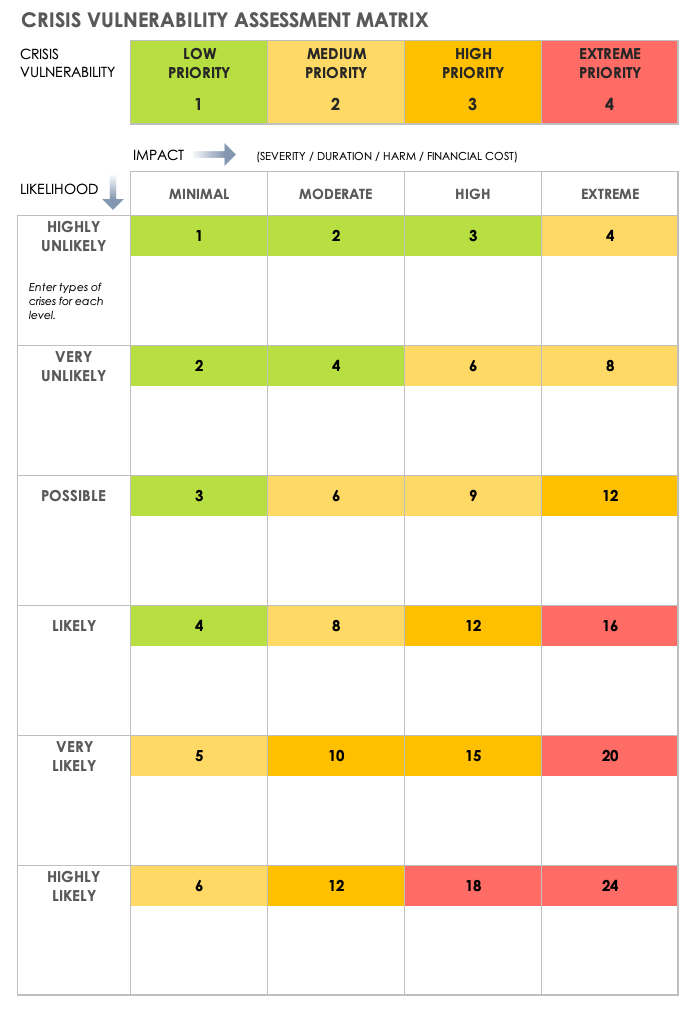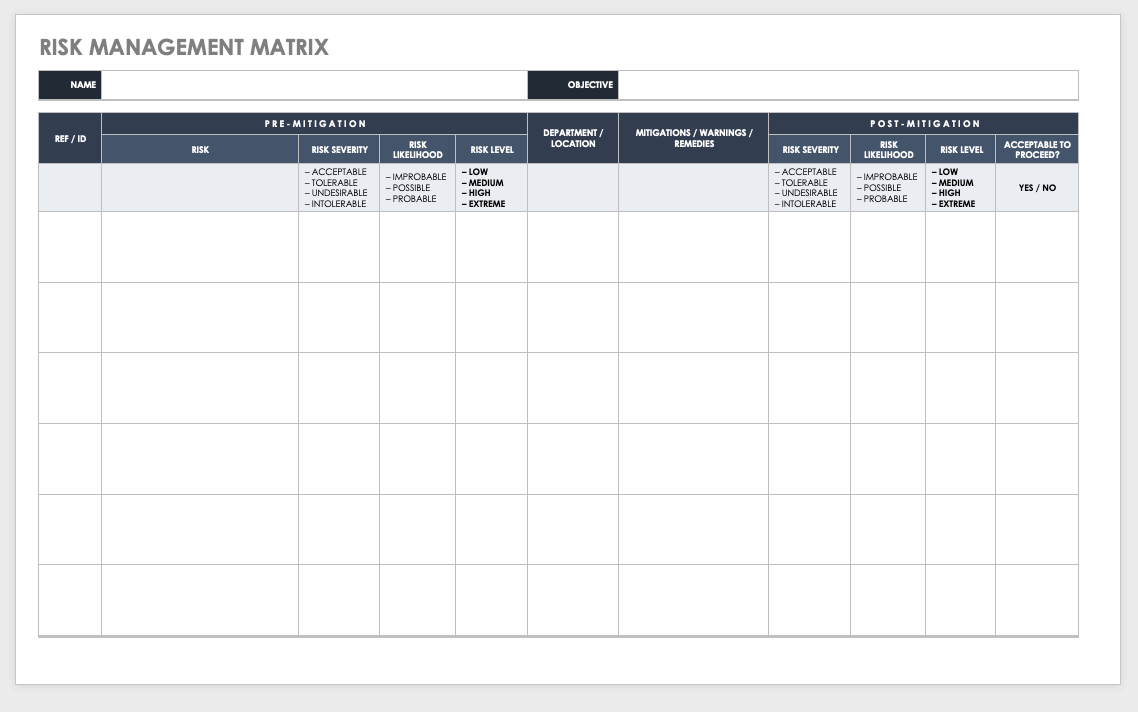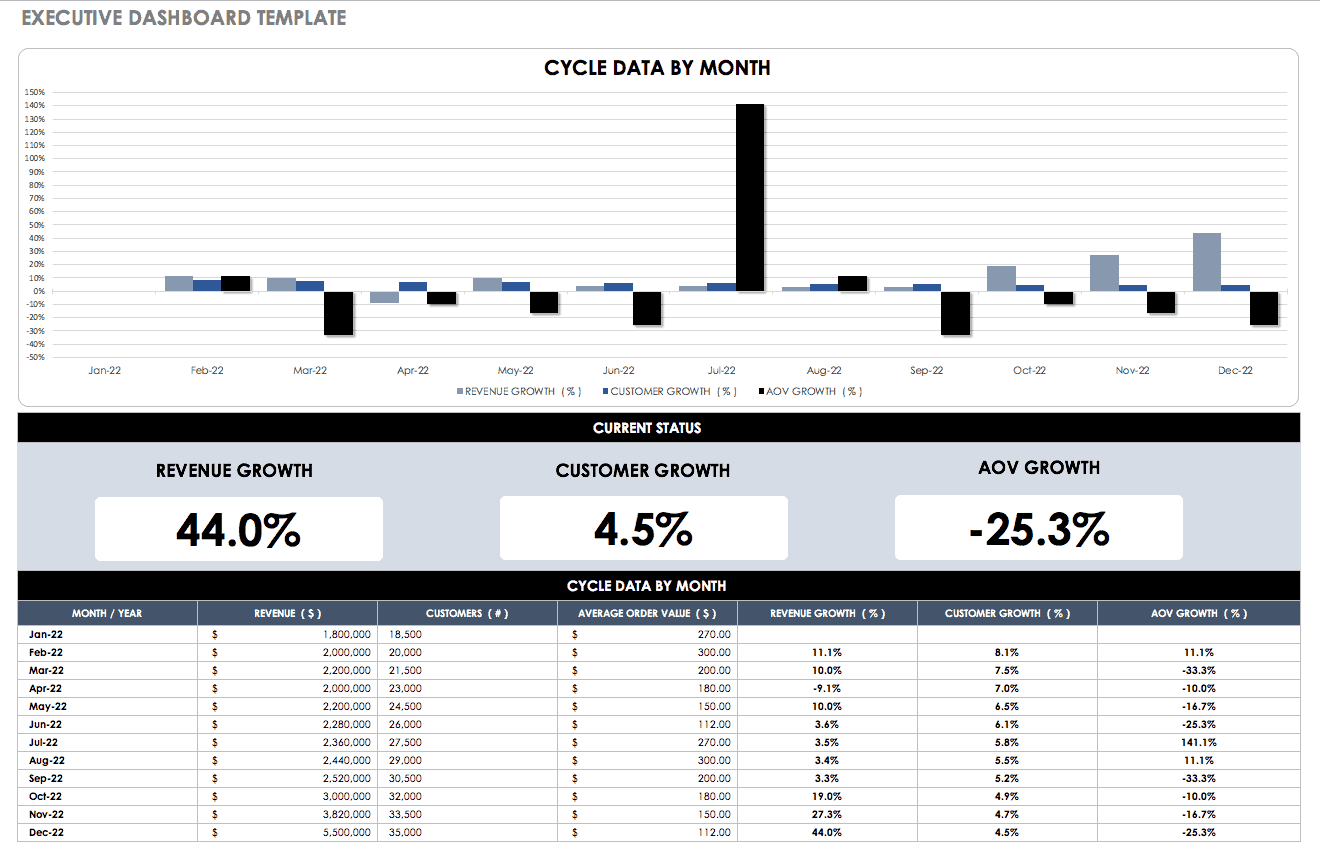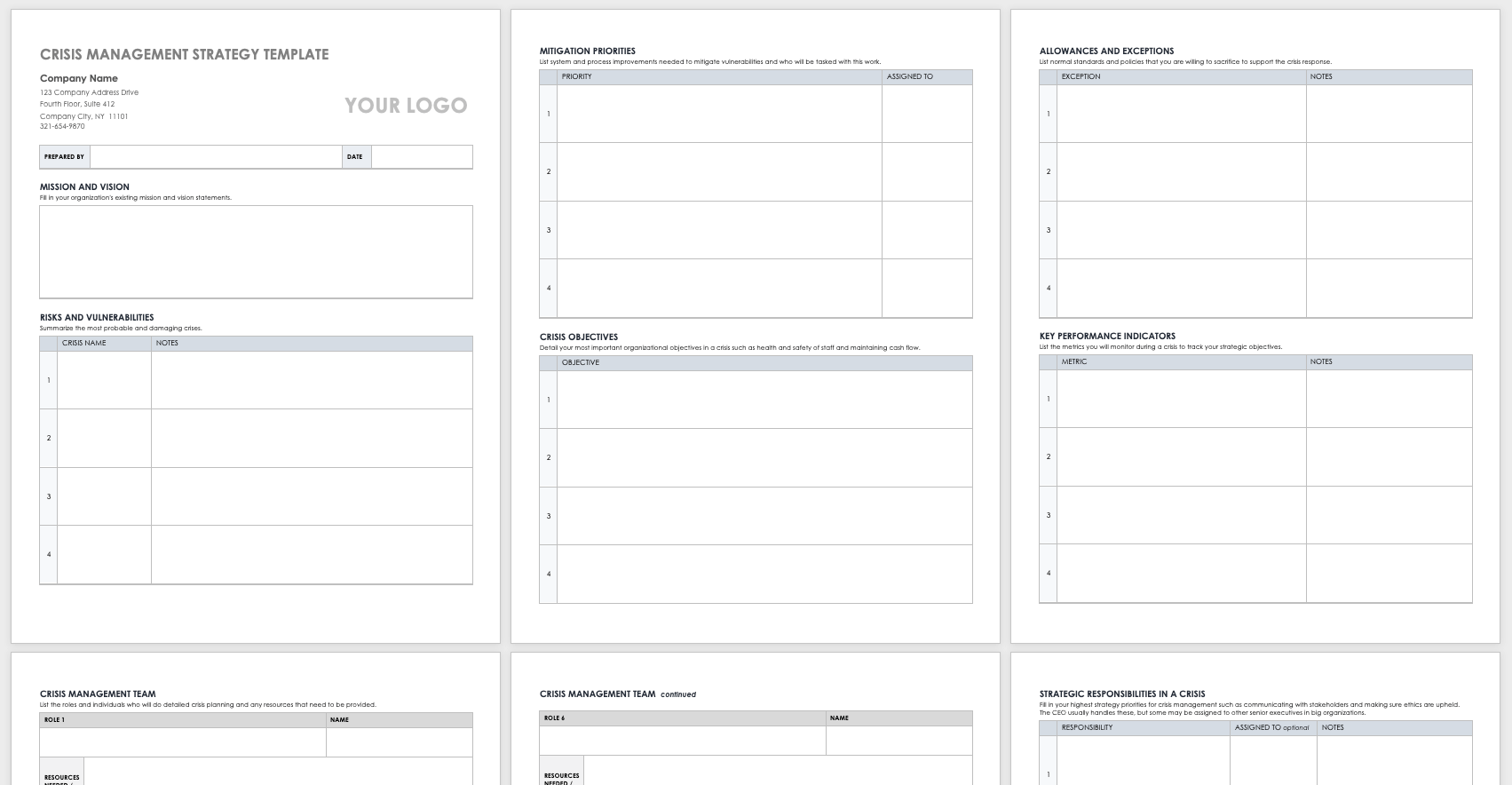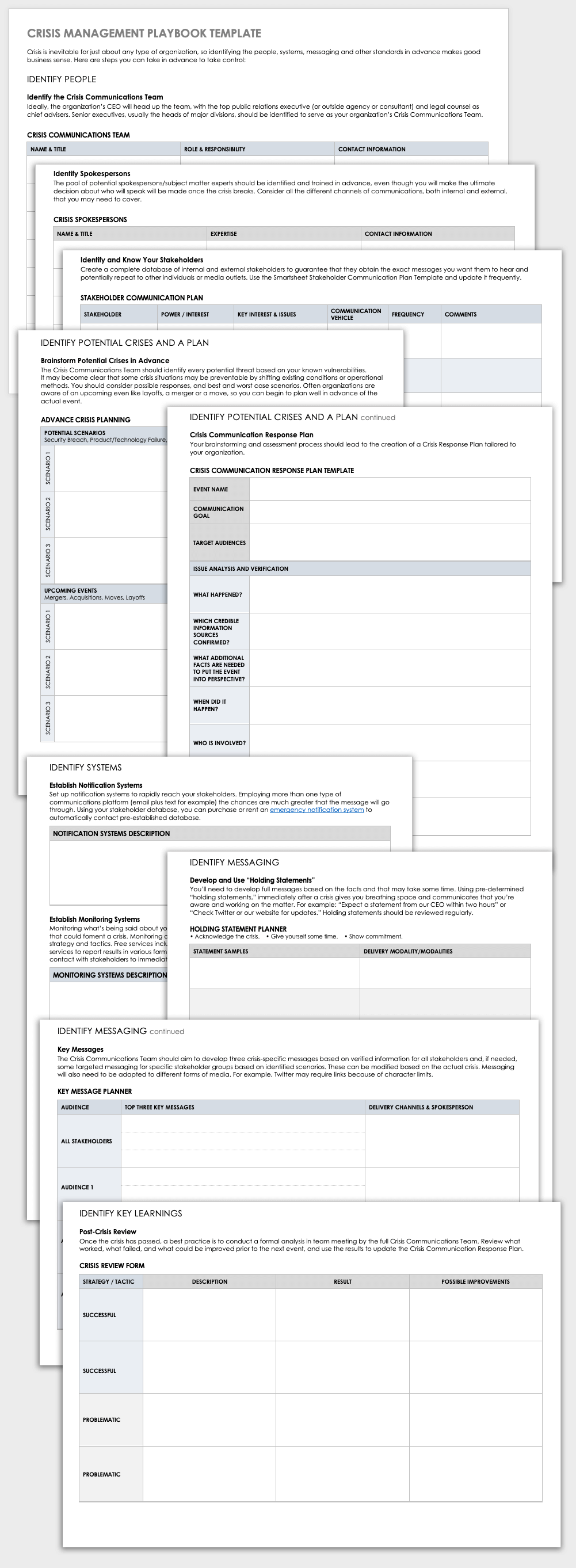What Are Crisis Management Strategies?
A crisis management strategy is the collective framework of decisions and choices that an organization makes to respond to a crisis (or the perception of one). The goal of your strategy is to position your organization to withstand a crisis.
There is some confusion about the differences between crisis management strategies and crisis management plans, theories, policies, or tactics. Strategies are high level and represent the broad vision of your approach, while tactics and plans are operational and action oriented. To learn more about crisis management models and theories, see “Models and Theories to Improve Crisis Management.”
Your organizational strategy, values, vision, and mission shape your crisis strategy.
Defining your strategy should precede any other step in crisis management planning, as the strategy lays the foundation for your further planning.
Because your crisis strategy must adapt to fit a range of unknown future scenarios, a strong strategy enables you to be flexible and agile in a crisis. Once you determine your strategy, identify the capacities and systems that need to be in place to support your strategy.
The crisis management team, sometimes supported by other departments or external specialists, performs detailed crisis planning. An organization’s senior executives and CEO are typically responsible for the crisis strategy and management of strategic priorities in a crisis. For a complete guide to crisis management plans, see “Step-by-Step Guide to Writing a Crisis Management Plan.”
Because public and media relations are the most visible aspects of crisis responses, many people think a PR strategy is the cornerstone of a crisis strategy. That perception is far from reality: Strategic goals also include managing the impact on an organization’s finances; protecting important relationships, such as those with investors, customers, and regulators; and safeguarding an organization’s reputation and public image.
If your company handles a crisis well, you should emerge with organizational stability, revenues at pre-crisis levels, and customer trust intact. Crisis strategy is just one dimension of crisis management. For an overview of crisis management, see “The Essential Guide to Crisis Management.”
The Importance of Crisis Management Strategies
Without a crisis management strategy, you are more likely to make mistakes that result in financial loss or lasting damage to your reputation and key relationships. Moreover, in the absence of a crisis strategy, your larger organizational strategy is at risk.
Acting strategically requires discipline and objective analysis. For example, you cannot plan for every potential emergency — doing so would be prohibitively expensive. Instead, choose and prepare for only the most likely scenarios.
When viewed through a strategic lens, the costs associated with purchases (such as stockpiling raw materials in the event of a supplier shutdown) are not just expenses, but also an investment in the resilience and longevity of your business.
Strategic crisis management requires you to analyze both internal and external threats and vulnerabilities, define a strategy, execute this strategy, and update the strategy as conditions evolve. Maintaining open communication and nurturing important relationships are key dimensions of crisis management strategies.
The consequences of not having a crisis management strategy include the potential for bad decisions, incorrect or inconsistent communication, and a longer-than-necessary recovery. To learn more, read about the effects of poor crisis management and communication.
While full recovery is always the goal of crisis management strategies, you should also incorporate some survival strategies. These are ways to keep your organization alive in the face of a hostile environment or an existential threat, and often include cost cutting, layoffs, and access to emergency credit. Creative thinking is an essential ingredient in crafting survival strategies.
How to Build a Crisis Strategy
Your senior management team should take charge of building a crisis strategy, and the first step is to review your organization’s mission and assess the firm’s weaknesses. Then, establish the items you want to protect in a crisis and those that you consider expendable. Following are the six steps to create a crisis management strategy and address an actual crisis:
1. Check Core Values and Gather Information: Review your mission and vision, and make sure those values guide your strategy.
Dave Thompson, Crisis Communication Expert and Media Trainer at C3 Collective, says staying true to your culture is paramount. When an organization is defining its crisis management strategy, “it should change neither its original mission, nor its vision or values,” he explains.
You should also do a high-level assessment of your organization’s vulnerabilities. Use this crisis vulnerability matrix to rank potential crises by probability of occurrence and severity of impact. The results will rank crisis types, providing your team with priorities for its planning effort.
Download Crisis Vulnerability Assessment Matrix Template
To analyze your risks, use this risk assessment matrix template, which allows you to prioritize weaknesses in order to address and assess the effectiveness of your crisis management efforts.
Download Risk Management Matrix Template
Excel l Word | PDF | Smartsheet
2. Set Goals: While you cannot predict the types of crises you may face, it’s important that you agree on the most important, high-level outcomes, such as maintaining the safety and health of your staff, minimizing delays in customer orders, or maintaining your cash flow.
Focus on a few objectives, and avoid the temptation to set zero impact as your goal — that’s just unrealistic.
This crisis management policy template enables you to record the goals you worked on in your strategic planning and add any related information.
Download Crisis Management Policy Template - Word
In addition, decide which of your normal business priorities you can set aside during a crisis. Can you tolerate an increase in your average customer hold time or relax your overtime policies? Identify the areas from which you can divert staff resources and money to support the crisis response.
Track crisis-related metrics that reflect the objectives you identified as critically important. During a crisis, you can use a simplified dashboard of these key performance indicators to stay informed and maintain focus on your priorities. This dashboard template provides an easy-to-read, graphic view of these high-level KPIs.
Download Executive Dashboard Template - Excel
3. Form a Team: Keeping your overall goals in mind, designate a crisis management team to plan tactics. This group will write your crisis management plan and execute it when a crisis strikes.
Provide this team with resources and support from the top. Business continuity planners should work with your crisis management team as well as do their own detailed planning. For details on the role of the CEO and top executives in a crisis, see “How to Build an Effective Crisis Management Team.”
4. Take Strategic Actions: You previously identified gaps or weaknesses in your business that you need to address in order to support your crisis management strategy. Now, do the work necessary to address such weaknesses. For example, increase your emergency cash reserve, create a climate of open communication, build a new factory that is earthquake resistant, or establish relationships with backup suppliers.
It’s particularly crucial to make sure that your finances, stakeholder relationships, and organizational reputation are in good shape — before a crisis strikes.
5. Make Sure the Right People Handle the Sensitive Priorities During a Crisis: The CEO and senior leaders of enterprises and large organizations are typically not involved in running the operational response to a crisis. Instead, the following sensitive strategic priorities are typically the executive management team’s responsibility:
- Make sure the organization is acting ethically and compassionately.
- Monitor and analyze developments for high-level implications.
- Limit financial damage and generate extraordinary cash needs.
- Clear any high-level obstacles that the crisis team faces, such as a need for more resources.
- Protect the organization’s reputation.
- Evaluate contingency plans.
- Provide leadership when you set a course of action.
- Communicate with key stakeholders (including the media, if appropriate).
“Even though your organization is in crisis, it is not about you,” Thompson reminds CEOs. “It's about the victims of the crisis, your organization's stakeholders, and your employees. If you take care of them, then you'll be taking care of the organization. If you forget them and think only of the organization and its executives, you could lose it all.”
For examples of strong and weak crisis management by companies, see “The Most Useful Crisis Management Examples: The Good, Bad, and Ugly.”
6. Thank and Recognize Your Staff after a Crisis: Thank and recognize your staff for its extraordinary efforts during a crisis. Make sure your crisis management team does a detailed post-crisis review and evaluates its findings.
- Your senior management team should do a strategic review and consider the following questions:
- Could we have seen the crisis coming?
- What early indicators did we miss or ignore?
- How well did the crisis management plan and the crisis management team work?
- Did the organization respond effectively to the crisis?
- What went well and what needs improvement?
- Was our communication clear and consistent?
- Did our reputation or our confidence in our organization suffer?
With the aim of making your organization more resilient, revise your strategy based on your answers to the aforementioned questions. These post-crisis lessons may also necessitate changes in staff training, HR policies, operations, compliance, and other areas of your organization. Delegate the implementation of these changes.
This crisis management strategy template walks you through the steps to make these changes and provides space to summarize the key elements of your strategy.
Download Crisis Management Strategy Template
Word l PDF | Smartsheet
See “Free Crisis Management Templates” to download other templates for management plans, helpful checklists, and tabletop exercises.
To learn more about the effects of poor crisis management and communication, take a look at these crisis management examples.
A Strategic Approach to Crisis Management
According to Crisis Management: Leading in the New Strategy Landscape, a book by Professor of Management William Rick Crandall and two colleagues, building your crisis management strategy requires a strategic mindset, which includes four main attributes:
- The ability to do a thorough analysis of strengths, weaknesses, threats, and opportunities
- The ability to think long term, sometimes many years into the future, while simultaneously factoring in your knowledge of your organization’s past and present
- The ability to be opportunistic and take advantage of favorable circumstances, while avoiding internal or external pitfalls
- The willingness to make difficult choices
Similarly, there are four main influences that shape crisis management strategy:
- Cultural: Cultural influences to an organization can be both internal and external, including prevailing norms in ethics and values.
- Institutional: These are concerns such as regulatory and legal constraints.
- Behavioral: These influences often include politics (i.e., the ways in which people and groups interact within the organization).
- Environmental: These include economic conditions and technological realities.
Crisis Prevention as a Crisis Management Strategy
The best crisis management strategy is prevention. A lot of crisis management involves preparing to react to an emergency or a disaster, but staying oriented toward prevention keeps you out of a reactive mode.
“If the...tone at the top allows a company to become reactive, meaning it does not anticipate issues, but waits for issues to arise before acting or reacting, this mentality leads to short-sightedness,” notes Braden Perry, Partner at Kennyhertz Perry, LLC and a former federal enforcement lawyer and chief compliance officer at a financial firm.
Here are some ways to become more proactive:
- Improve Communication: Break down communication silos in your organization. Communication failures can compound problems, leading to major crises. Analyses of crises at Nokia, Enron, British Petroleum, and other companies traced the root cause or aggravating factor to the poor flow of information. A Harvard Business Review article recommends promoting a culture of open dialogue, aligning your communication with your organizational strategy, engaging your staff in the communication process, and actively working to get executives and managers closer to employees.
- Implement Reverse Engineering: Examine in depth the most devastating and common crises to hit organizations in your sector, and draw lessons from them. Work backward to see what changes you need to implement in order to prevent or lessen a similar crisis.
- Audit Risks: Look for vulnerabilities at every level of your organization by talking to each staff member in confidence. Look at real-world risks, not just financial threats. Ask questions such as the following: Do you have 24/7 access to top management executives, in case you need to contact them (anonymously if necessary) about a serious problem? And, if, overnight, your work location became unavailable, would you know where to report to the next day? Talk to key stakeholders about the vulnerabilities they see. Then, evaluate your crisis documents and policies for weaknesses, and develop solutions for any problems you find.
- Collect Intelligence: Broaden your information gathering beyond competitor activity. Monitor media for warning signs and intelligence that could foreshadow a crisis for your organization. Red flags could include the following: political developments in countries where suppliers are based; regulatory action; activist campaigns; trends in financial fraud and corruption; and climate data. Also, be aware of social media activity around your brand. Create early warning systems for key parts of your operation, such as IT.
- Maintain Social Responsibility: According to research from Oxford Metrica, companies that — in everyday, non-crisis periods — demonstrated a consistent record of prioritizing employees and communities, rebounded from crises with their stock market value intact. If you are not socially invested before a crisis, then any professions of concern following a crisis will appear insincere — and stakeholders will tend to disregard your apologies. So, transform your culture and values into real-world actions, such as supporting local schools, mentoring minority entrepreneurs, or volunteering for nonprofits. When you engage in community outreach on a regular basis, the public is much more likely to believe your crisis response reflects genuine concern.
This crisis management playbook will help you identify potential crises, plan your messaging, and record what you learned from an actual crisis.
Download Crisis Management Playbook Template
Improve Your Crisis Management Strategies with Real-Time Work Management in Smartsheet
Empower your people to go above and beyond with a flexible platform designed to match the needs of your team — and adapt as those needs change.
The Smartsheet platform makes it easy to plan, capture, manage, and report on work from anywhere, helping your team be more effective and get more done. Report on key metrics and get real-time visibility into work as it happens with roll-up reports, dashboards, and automated workflows built to keep your team connected and informed.
When teams have clarity into the work getting done, there’s no telling how much more they can accomplish in the same amount of time. Try Smartsheet for free, today.

